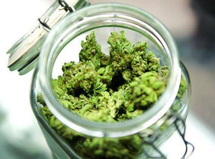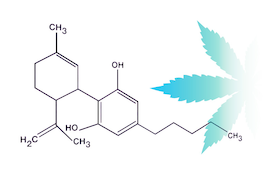|
Opioid overdose deaths in the United States continue to rise. Last year, opiate overdoses toppled over 100,000 for the second year in a row. Sixty-eight percent were due to synthetic opiates, mostly fentanyl. We place our trust in the FDA and the pharmaceutical industry to inform us of impending dangers from drugs. Yet, our trust waivers as it’s revealed that pharmaceutical companies, like Purdue, and its owners, the Sackler family, played a “special role” in initiating the current opiate crisis by pursuing a marketing approach that persuaded the medical establishment to widely prescribe opiates. Decades later highly addictive synthetic opiates, like fentanyl, are fueling the crisis and addiction demands the supply of opiates from unregulated markets.
Opiate addicts are pivoting to accessible Cannabis in places where its legal. Researchers at the University of British Columbia and UCLA teamed to investigate the success of this harm reduction strategy. 205 people who use unregulated “street” opioids were selected to complete a Cannabis questionnaire. 118 participants (57.6%) reported using Cannabis to manage opioid cravings resulting in a significant reduction in their opioid use. The researchers concluded that improving the accessibility of Cannabis may be a useful strategy to mitigate the associated harms of the current opioid epidemic. The biochemical explanation for addiction involves dopamine, a neurotransmitter also referred to as the “pleasure chemical.” In response to using pleasurable drugs or after pleasurable experiences, dopamine is released into the neural pathways of the brain’s reward center. The drug or experience is not physiologically damaging. Abuse occurs when repetitive use or behavior cannot be stopped to the detriment of imperatives. The release of dopamine after a pleasurable experience reinforces its behavior by enhancing the memory of the experience noting associated environmental cues. As such, the “pleasure chemical” is a misnomer. Dopamine doesn’t cause pleasure; it reinforces experiences. At appropriate doses, THC and CBD release dopamine into the mesolimbic reward pathways. Endocannabinoids also modulate the neural reward pathway. Cannabinoid and dopamine receptors exist as a heterodimer complex, a unified receptor system. As such, the Endocannabinoid System and its association with dopamine provide an opportunity to moderate addiction. Opiate addicts have already exploited this opportunity by choosing Cannabis to reduce their cravings. There is a general belief in the Cannabis community that smoking Cannabis with a particular “fuel” or “gassy” aroma is most useful in opiate withdrawal. This aroma classification of Cannabis suggests the hypothesis that Cannabis constituents may be acting synergistically. Using an algorithm, the CESC, a Cannabis research organization, classifies Cannabis associated with aroma. The content data derived from a broad analysis of Cannabis is incorporated in the classification and used to determine which Cannabis subtypes effectively modulate behavior. Results of the investigation will benefit current victims of the opioid crisis. The study of community users plays an important role in the development of safe and efficacious Cannabis products. The Cannabis community sits on the front lines of trial and error. Their observations suggest that Cannabis subtypes matter. As a result, multi-agent pharmacology must be applied to derive the optimal qualities of Cannabis keeping in mind that the primary objective is to reduce opioid deaths. |
AuthorJean Talleyrand, M.D., Archives
September 2023
Categories |
Mailing Address: MediCann 1336 Willard Street, C • San Francisco, CA 94117
Important Disclaimer!
The information contained in this site does not intend to replace any medical advice or care by a trained physician.
Any use of this information is solely the the responsibility of the user.
Important Disclaimer!
The information contained in this site does not intend to replace any medical advice or care by a trained physician.
Any use of this information is solely the the responsibility of the user.
© COPYRIGHT 2015. ALL RIGHTS RESERVED.


 RSS Feed
RSS Feed


